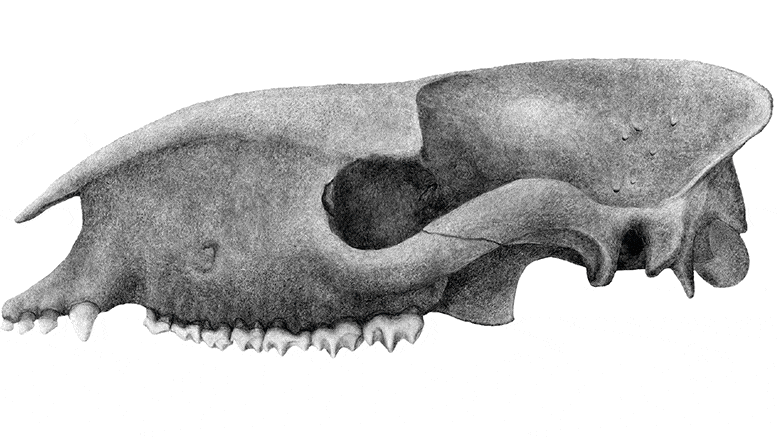
Prehistoric mammals bulked up, rather than develop bigger brains, to boost their survival chances once dinosaurs had become extinct, research suggests.
For the first 10 million years after dinosaurs died out, mammals prioritized boosting their body size to adapt to radical shifts in the make-up of Earth’s animal kingdom, researchers say.
Their findings show that the size of mammals’ brains, compared with their body weight, decreased following a catastrophic asteroid impact 66 million years ago that ended the reign of dinosaurs. It had been widely thought that mammals’ relative brain sizes generally increased over time in the wake of the wipeout.
While much is known about the evolution of the brains of modern-day mammals, it has been – until now – unclear how they developed in the first few million years following the mass extinction.
A team from the University of Edinburgh has shed light on the mystery by performing CT scans on newly discovered fossils from the 10-million-year period after the extinction, called the Paleocene.
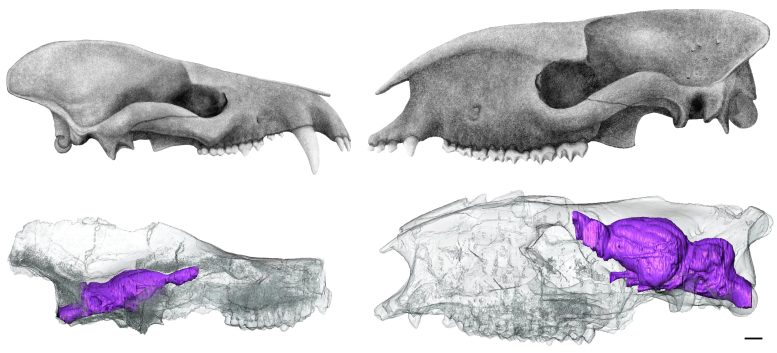
Crania and virtual endocasts inside the translucent cranium of the Paleocene mammal Arctocyon (left) and the Eocene mammal Hyrachyus (right). Credit: Ornella Bertrand and Sarah Shelley
Their findings reveal that the relative brain sizes of mammals at first decreased because their body size increased at a much faster rate. Results of scans also suggest the animals relied heavily on their sense of smell, and that their vision and other senses were less well developed. This suggests it was initially more important to be big than highly intelligent in order to survive in the post-dinosaur era, the team says.
Around 10 million years later, early members of modern mammal groups such as primates began to develop larger brains and a more complex range of senses and motor skills. This would have improved their survival chances at a time when competition for resources was far greater, the team says.
The study, published in the journal Science, was supported by Marie Skłodowska-Curie Actions, European Research Council, Leverhulme Trust and National Science Foundation. It also involved New Mexico Museum of Natural History and Science in the US and several international institutions.
The idea that big brains are always better to invade new environments or survive extinctions is misleading, according to the research team.
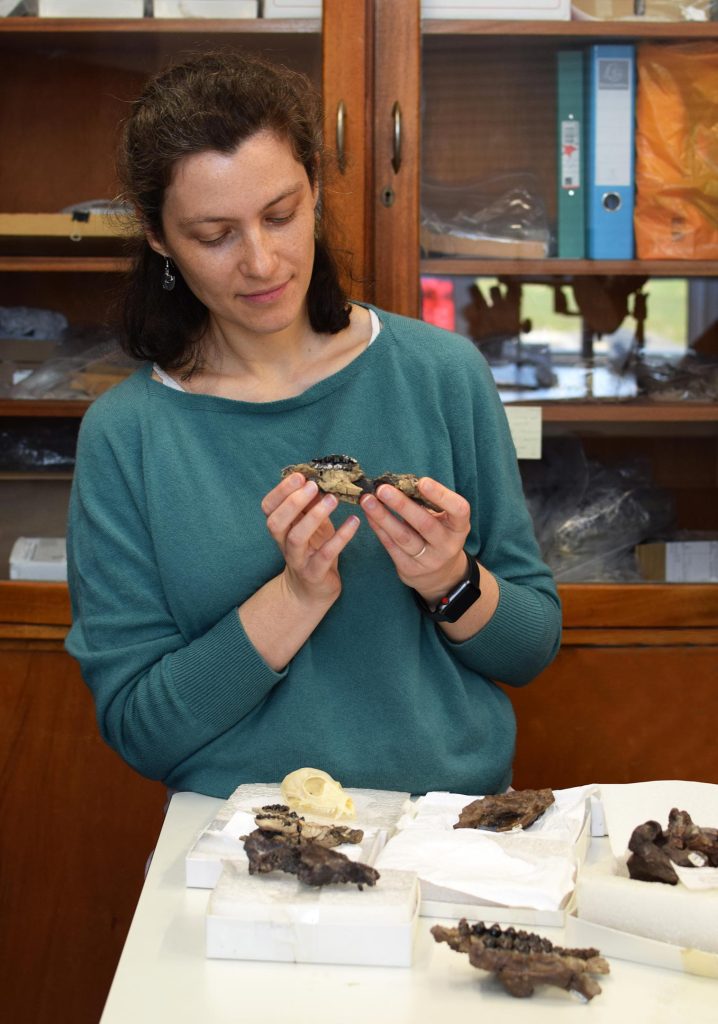
Dr. Ornella Bertrand looking at the fossil skull of a mammal that lived during the Paleocene, at the School of Geosciences, University of Edinburgh, UK. Credit: Sarah Shelley
Lead researcher Dr. Ornella Bertrand, of the University of Edinburgh’s School of GeoSciences, says: “Large brains are expensive to maintain and, if not necessary to acquire resources, would have probably been detrimental for the survival of early placental mammals in the chaos and upheaval after the asteroid impact.”
Because today’s mammals are so intelligent, it is easy to assume that big brains helped our ancestors outlast the dinosaurs and survive extinction – but that was not so, the team says.
Senior author Professor Steve Brusatte, also based at the University of Edinburgh, says: “The mammals that usurped the dinosaurs were fairly dim-witted, and only millions of years later did many types of mammals develop bigger brains as they were competing with each other to form new ecosystems.”
The badlands of northwestern New Mexico are among the few places where scientists can find complete skulls and skeletons of the mammals that lived immediately after the mass extinction of dinosaurs.
Dr. Thomas Williamson, Curator of Palaeontology at the New Mexico Museum of Natural History and Science, said: “Collecting and CT scanning many of the beautiful fossil skulls has led to this new understanding of what these bizarre animals were like and the evolution of the mammalian brain.”
Reference: “Brawn before brains in placental mammals after the end-Cretaceous extinction” by Ornella C. Bertrand, Sarah L. Shelley, Thomas E. Williamson, John R. Wible, Stephen G. B. Chester, John J. Flynn, Luke T. Holbrook, Tyler R. Lyson, Jin Meng, Ian M. Miller, Hans P. Püschel, Thierry Smith, Michelle Spaulding, Z. Jack Tseng and Stephen L. Brusatte, 31 March 2022, Science.
DOI: 10.1126/science.abl5584

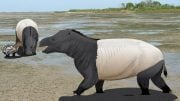
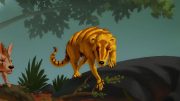
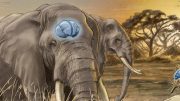
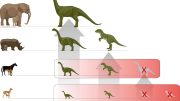

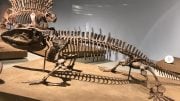
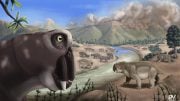
Is that so. You don’t say